Do insects prefer native plants? A study into the garden plant origin preferences of invertebrates
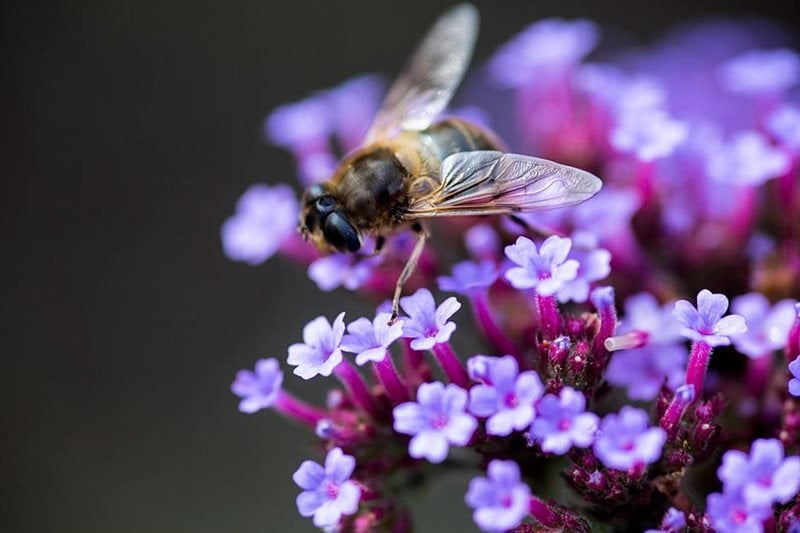 Project title: Plants for Bugs: does the geographical origin of plants affect the abundance and diversity of the invertebrates they support?
Project title: Plants for Bugs: does the geographical origin of plants affect the abundance and diversity of the invertebrates they support?
| Research rundown |
It’s often assumed that insects and other invertebrates that live in gardens are best supported by native plants, but is this true?
With the average garden containing around 70% non-native plants to just 30% British native plants we wanted to find out whether insects do actually prefer native plants.
Our research based on a four-year field study at RHS Garden Wisley has shed new light on the plantings invertebrates in UK gardens prefer. |
Findings in brief
In all, the study found that the best way to support invertebrates in gardens and promote a healthy ecosystem, is to choose plantings biased towards British native plants and encourage dense vegetation, while leaving some patches of bare soil.
Near-native (northern hemisphere) - and exotic (southern hemisphere) plants also have a positive role to play in providing a habitat for invertebrates, offering good evergreen winter cover and supporting pollinators when in flower. Many gardens are already important habitats for invertebrates, but this research helps refine the advice given to gardeners wanting to maximise their garden’s potential and support declining invertebrates.
Most importantly, any planting in a garden is better than none for invertebrates and diversity of plant origin in a garden is a strength, not a weakness.
“The power of a garden lies in its very smallest inhabitants. Gardeners who look after them will have the greatest positive impact for biodiversity.”
Andrew Salisbury, principal entomologist at the RHS
What difference does this research make?
This research informs the advice we give gardeners about planting for wildlife. Collectively, the nation’s 27 million gardeners care for an area bigger than all of the country’s nature reserves combined. We have a great responsibility to protect the wildlife that calls our gardens home.
Results and findings
By the end of the study approximately 80,000 invertebrates had been counted and more than 300 species identified. Findings are summarised below.
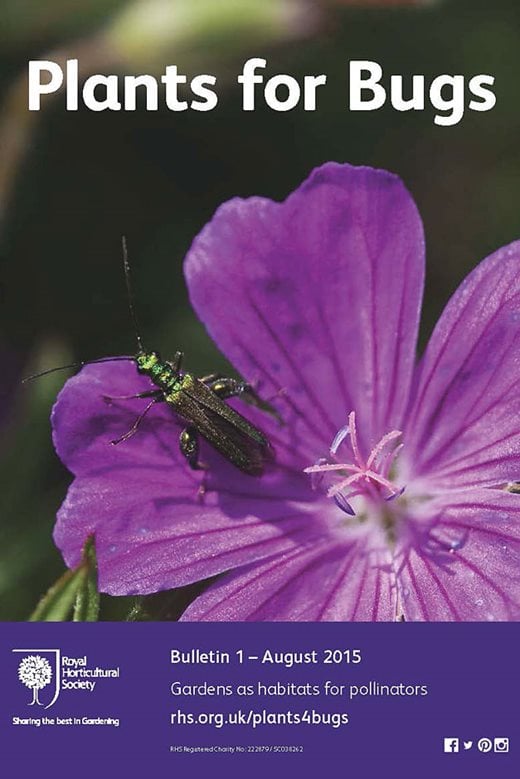 Pollinating insects: paper one
Pollinating insects: paper one
The first paper looked at pollinating insects such as hoverflies and bumblebees. To support maximum number of pollinators it was recommended including a mixture of plants from different regions, with a focus on growing native plants but using exotic plants to extend the flowering season.
The more flowers a garden can offer, the greater the number of bees, hoverflies and other pollinating insects it will attract.
| “The best strategy for gardeners wanting to support pollinating insects in gardens is to plant a mix of flowering plants from different countries and regions” |
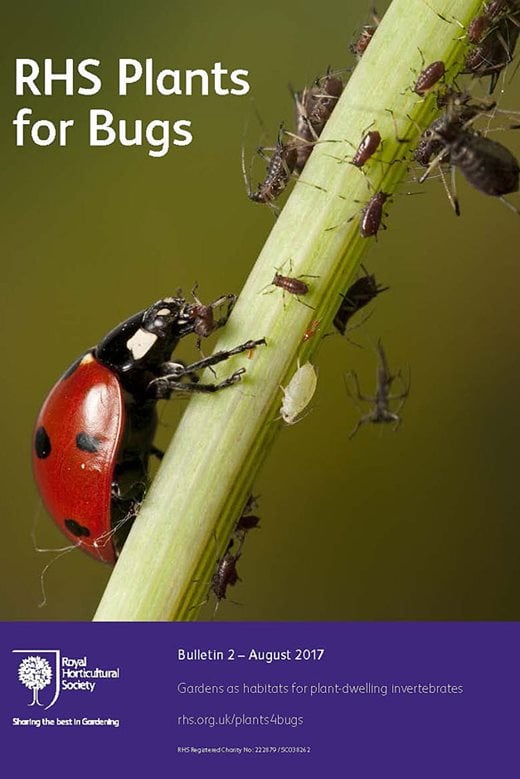 Plant-dwelling invertebrates: paper two
Plant-dwelling invertebrates: paper two
The second paper focused on how to support plant-dwelling invertebrates such as caterpillars and plant bugs. A predominance of British native plants grown together in a dense planting scheme was recommended as the best to support a wide range of plant-dwelling invertebrates. However, northern-hemisphere plants supported only 10% fewer invertebrates, and southern-hemisphere 20% fewer, so these shouldn’t be entirely overlooked.
| “Regardless of plant origin, the more densely a planting scheme is planted or allowed to grow, the more invertebrates it will support.” |
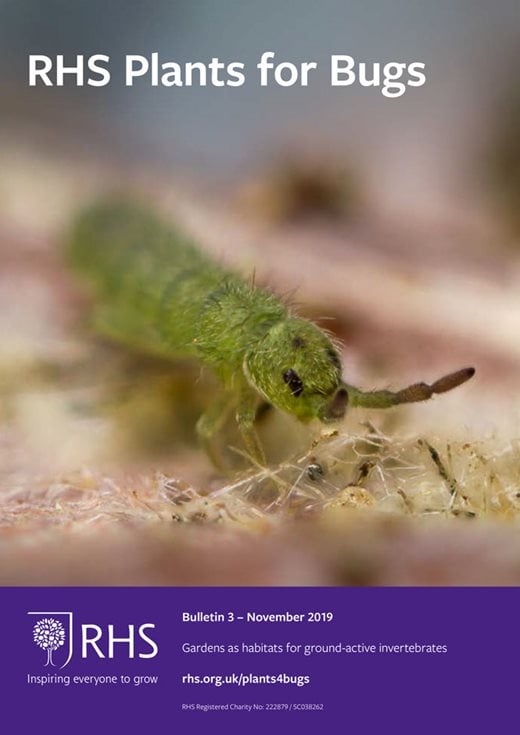 Ground-active invertebrates: paper three
Ground-active invertebrates: paper three
The third paper was published in 2019. Planting for ground-active invertebrates such as ground beetles and woodlice was the focus. It was found the denser the vegetation, the higher the overall ground-active invertebrate abundance regardless of plant origin but ground-dwelling spiders were found in greater numbers among sparser plantings.
The best strategy for gardeners wanting to support ground-active invertebrates in gardens is to densely plant with more native and near-native plants than exotic plants, though leaving some bare patches may favour some groups such as spiders.
| “Native planting schemes, enhanced with native or non-native evergreens, will support the most ground-active invertebrates.” |
Project overview
- Project start date: 2009
- Lead researchers: Andrew Salisbury and Helen Bostock
- Collaborative researchers: James Armitage, Stephanie Bird, Anna Platoni, Mark Tatchell, Ken Thompson and Joe Perry
- Research team: Plant Health
- Partners: Wildlife Gardening Forum
The problem – why do we need this research?
According to the 2019 State of Nature report, 41 per cent of UK species studied have declined and 133 species have already been lost since 1970. Studies showing insect declines, including pollinators, frequently make headline news. Thankfully gardens are habitats where people help make a difference to these alarming trends. But knowing what to plant in them to support invertebrates can be confusing.
What did we do, and how?
The project consisted of 36 (3x3m) garden-like plots planted with a mixture of bulbs, perennials, shrubs, grasses, ferns and a climber.
Planting was divided into three categories, with a total of nine planting variations. 14 plant species native to one of three geographical zones: British native, northern hemisphere and southern hemisphere were selected for each treatment.
Download the full list of plants used in the project (979kB pdf)
The experiment consisted of 18 plots within RHS Garden Wisley and another 18 at a replicated site at the nearby RHS Deers Farm Field Research Facility.
The plots were managed as typical garden borders and were hand-weeded, watered, and cut back or staked where required. No pesticides were used. Three methods were used to monitor the invertebrates on the beds, largely at six-week intervals between March and October:
- Pitfall traps – plastic beaker sunk into the middle of each bed and part-filled with preserving fluid to capture ground fauna, such as ground beetles and woodlice. This method was also used during winter months
- Suction sampling – a Vortis suction sampler was swept slowly over the plant foliage to suck up insects, such as flies, aphids, caterpillars, plant bugs, leafhoppers, beetles and their larvae
- Observation of flower-visiting insects – dependent on the weather conditions, an observer recorded flying insects seen landing on the flowers, such as bees, wasps, butterflies, and flies (including hoverflies)
Outputs / publications
Salisbury, A., Armitage, J., Bostock, H., Perry, J., Tatchell, M. & Thompson, K. 2015. Enhancing gardens as habitats for flower-visiting aerial insects (pollinators): should we plant native or exotic species? Journal of Applied Ecology 52: 1156-1164
onlinelibrary.wiley.com/doi/10.1111/1365-2664.12499/full
Salisbury A. Al-Beidh S., Armitage J., Bird S., Bostock H., Platoni A., Tatchell M., Thompson K., and Perry J. 2017. Enhancing gardens as habitats for plant-associated invertebrates: should we plant native or exotic species? Biodiversity and Conservation. 26: 2657-2673
doi:10.1007/s10531-017-1377-x
Salisbury A, Al-Beidh S, Armitage J, Bird S, Bostock H, Platoni A, Tatchell M, Thompson K. and Perry J. 2019. Enhancing gardens as habitats for soil-surface-active invertebrates: should we plant native or exotic species? Biodiversity and Conservation.
https://doi.org/10.1007/s10531-019-01874-w
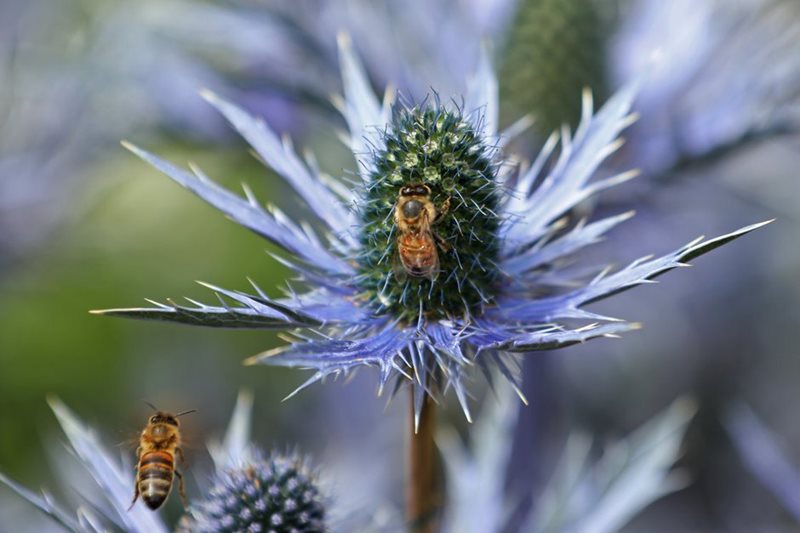
See also

